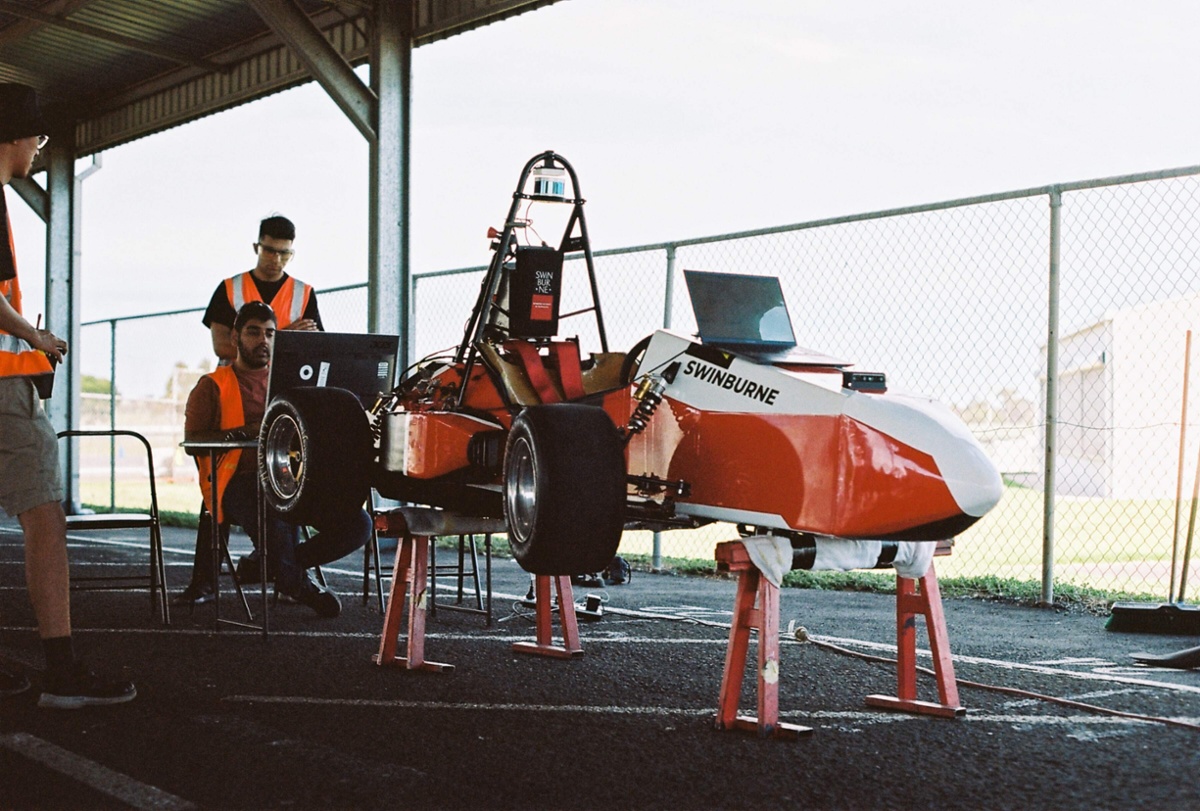
Our team here at W.C. Branham is known for our “Solutions in Motion”—and for our products that enable vehicles and industrial equipment to stop quickly, safely, and reliably. So what happens when the vehicle in question is a race car? Here’s how our team joined forces with Team Swinburne to design a better braking solution.
The Racing Team
Team Swinburne is a student-led Formula 1-style racing team that has been working to design, build, and race cars in Australia’s annual Formula SAE-A competition for nearly a quarter century. Students use their team experience to hone a wide range of degree-related skills, including business and marketing and, of course, engineering.
Their race cars are electric. They were initially driver-operated, but in 2021 the team started developing autonomous cars as well. Last year was the first time their driverless cars competed.
Autonomous cars are still considered a demonstration category, so at this point the most important aspect of competition is developing the best prototype. That said, for the racing season that ended in December, Team Swinburne placed second overall in Australia, and they also posted the fastest autocross (single-lap) time in the entire country.

The Design Conundrum
While winning requires speed, even race cars must be able to stop. Traditional race cars have a kill switch—a safety mechanism the driver or someone outside the car can use to instantly shut down the engine. Safety is no less important with autonomous cars, notes Team Swinburne’s Mukul Chadha, but since there is no driver, a remote button must be used to immediately stop the car.
Mukul joined Team Swinburne during his freshman year, initially as one of the team’s electrical engineers. Now, after three years, he is Team Lead for the autonomous car group. He explains that teams are not allowed to compete unless they can demonstrate multiple times that their safety braking systems work without fail.
Team Swinburne was using a hydraulic actuation system for remote emergency stopping. However, it was heavy, bulky, and complicated—all significant detriments in racing. They wanted to try air-oil conversion instead. An air-over-oil intensifier converts air pressure to hydraulic pressure to achieve the greater force required for braking.
Unfortunately, this technology was not well developed yet in Australia, and none of the existing manufacturers were related to motorsports, so there was no possibility of securing a sponsor.
The Branham Solution? Flawless!
This year, the team was able to secure a sufficient budget to purchase an air-over-oil system, so Mukul took to the internet to find a supplier. He discovered W.C. Branham and gave us a call to discuss the possibilities. Along with learning how Branham could help with air-over-oil technology, Mukul learned that the Branham team loves supporting engineering students working on special projects.

“Over the past seven years, Branham has sponsored over 20 schools and universities with caliper disc brakes and brake discs, air over oil Intensifiers, and pneumatic actuators,” Owner Troy Branham said. “We enjoy giving back to STEM programs like Team Swinburne.”
Mukul says the folks at Branham worked closely with his team members on this development project. Great people and great advice, he says, and no charge from Branham.
“They are a remarkable group of talented and hard-working young individuals,” said Troy Branham. “When we received their online inquiry looking for a solution to their technical problem, Branham was happy to support them and we’ll continue to do so.”
To implement the new solution, Mukul’s team installed the intensifier—which is powerful but light and compact—in-line between the race car’s onboard air pressure canisters and the brake. The remote button triggers an electrical switch that opens the line to instantly activate the system and stop the car.
“The system works flawlessly!” reports Mukul.

Looking to the Future
Car development for this year’s season began in February, and the competition will run into December 2024. Teams are required to develop a new car every year, although they can modify designs from the previous year. To compete, teams must first present and justify their car designs since the program is intended as a hands-on learning opportunity. Team Swinburne is using Branham air-over-oil technology again this year in their new driverless car.
Mukul says that his years with Team Swinburne have given him both practical engineering experience and networking contacts. Thanks to those contacts, he will be moving into a development position with an Australian aerospace company after graduation. Meanwhile, he and his team continue to build their relationship with the folks at Branham.

Is your engineering school team working on an exceptional project that involves actuation or braking? Our Branham design engineers love a good challenge, so contact us, and let’s talk about your project.


